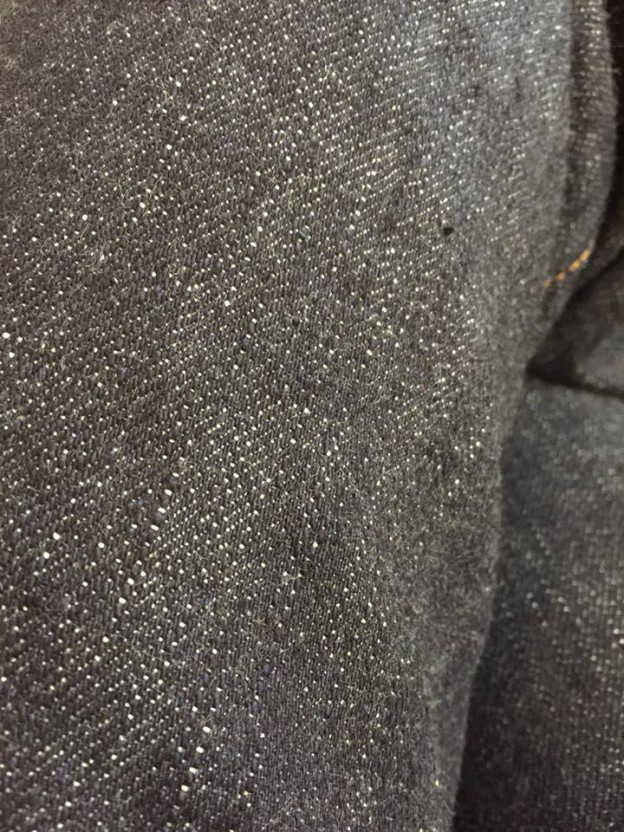The first thing to consider when approaching Japanese denim is simple:
Unsanforized vs. sanforized?
Those words seem farfetched, if not scientific. But it is a little more simple than you’d think:
In 1930, an American gentleman noticed a large discrepancy in the production of denim in the United States. Often it shrank at vary in rates. This led him to produce a machine that steam treated cotton fibers to be preshrunk. This eliminated the need to have a worry about cotton pants, including denim, to shrink when getting wet. Sanford Lockwood Cluett developed a tool that made it easier for decades’ worth of denim wearers to understand how to size their denim.
It breaks down into two categories. Sanforized denim is pre-shrunk, pre-steamed and soaked. It will possibly stretch some, depending on the denim, but the expressed goal of sanforization is to eliminate all shrink during soak. Courtesy of our friend @halfresky we have a great soak shot here. Some people say to wear your jeans in the tub to be mindful of the waist, some soak their jeans in a mop bucket. Theres’s no wrong way to do it, whatever works for you. Experiment:

The other school of thought is the purchase of unsanforized denim, and it has its merits as well. When a denim is shrunk-to-fit, as the old Levi’s ads said, it can better morph to the body. Pre-shrunk denim often appears “shinier” and is more starchy, or rougher. However, plenty of unsanforized denims are also rough, but known to be softer post-soak. Denim also increases in weight (per square yard) after being soaked, as the density increases.
The soaking of unsanforized denim (and some hardcore denimheads don’t even soak, ever! — though this isn’t recommended, as it often can change your fit, fades and opinion of your jeans) shrinks it and softens it. Often it brings out different levels of blue. Different shades and hues.

Certain brands like ONI are known to stretch more, so, often buyers “size down” or buy a size or two below their actual waist size, to account for the stretching, and to ensure a better fit, ultimately. (Most exchanges are due to buying denim too small, so please, ask use for our advice first, before sizing down).
We also carry brands like Momotaro and Japan Blue, known for their lack of stretch. It is recommended to find your waist size — by either the 360 degree method or the flat method — and figure out the denim for you from there. In-store we provide measurements for either a Western or an Eastern audience. It doesn’t matter who. We got ya. If you’re used to the flat method, go ahead and follow that, lay ’em flat and measure across the waist. If not, use the 360 degree method. We’re going to do everything we can to get your jeans to fit the way you need them to fit. Follow the guide here:
http://blog.denimio.com/sizing-guide

First, it is important to figure out whether to buy unsanforized or sanforized. Then, to figure out the right brand and fit.
It is often recommended with your first pair of high-end Japanese denim to try a sanforized pair, so you can avoid any problem often encountered with unsanforized denim with peoples’ first pairs. Sanforized denim to some lacks character — remember, this is to some — but it is more dependable, in regard to stretch.
Stay tuned for part III. We will explore the importance of knowing your thigh measurements, the elasticity of different brands and more!

